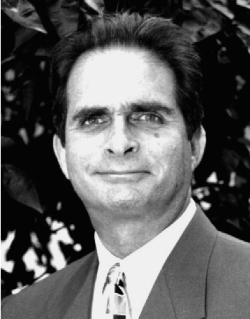In the late 1980s, hypnotherapist Jack True and I began a research project we loosely called The Underground. From his side, he came from his experience with patients; from mine, I came from explorations of early Tibetan practices involving imagination exercises.
I kept extensive notes over the years we worked together. Here are several of those notes.
Once you get rid of the fatuous notion that the mind is the brain, you see mind as a series of spaces in which the individual thinks, ponders, remembers, plans, analyzes, solves, much as an explorer investigates various lands.
In this effort, he encounters various programs, which are fixed ways of perceiving and thinking.
These programs are ‘the reliables’, and they are usually wrong about everything. They are certainly limited.
In this effort, he encounters various programs, which are fixed ways of perceiving and thinking.
These programs are ‘the reliables’, and they are usually wrong about everything. They are certainly limited.
Programs function like algorithms geared to come up with an ‘average’ answer. An acceptable answer. But they extend far beyond the subjects we are used to contemplating.
For example, they reject the possibility that there is space, time, and energy other than those we encounter every day. These programs prevent seeing spaces, times, and energies that don’t belong to this universe or level of existence.
For example, they reject the possibility that there is space, time, and energy other than those we encounter every day. These programs prevent seeing spaces, times, and energies that don’t belong to this universe or level of existence.
During sleep, the programs relax.
A person dreams, and in those dreams he inhabits places which are off-limits during waking hours. When he awakes, he labels those experiences so that they lose their intrinsic value and meaning.
Psychology, psychiatry, and psychoanalysis are all methods by which the essential raw power and energy of dreams are minimized through analysis and symbolic interpretation.
Accordingly, the dreamer didn’t really go anywhere and experience something vivid; he merely threw up symbols on a screen, which can be understood as reflections of his problems and issues.
This psychological approach is a social program designed to hem in the individual and keep him in a prison.
A person dreams, and in those dreams he inhabits places which are off-limits during waking hours. When he awakes, he labels those experiences so that they lose their intrinsic value and meaning.
Psychology, psychiatry, and psychoanalysis are all methods by which the essential raw power and energy of dreams are minimized through analysis and symbolic interpretation.
Accordingly, the dreamer didn’t really go anywhere and experience something vivid; he merely threw up symbols on a screen, which can be understood as reflections of his problems and issues.
This psychological approach is a social program designed to hem in the individual and keep him in a prison.
In many cultures, a person who has a particularly vivid dream goes to the priest (medicine man, shaman, healer) for interpretation.
In most cases, the dreamer receives a piece of guidance that aligns with the culture’s cosmology and reinforces it. More limitation.
In fact, what happened during the dream was: the person, temporarily freed from his own mind-programs, ventured out into ‘foreign’ territory and found people and places; he found a different level of life taking place; he watched it or participated in it.
In doing so, he received an injection of high-level energy that went beyond what he experienced in waking life.
This energy is not of the ordinary physical kind.
In most cases, the dreamer receives a piece of guidance that aligns with the culture’s cosmology and reinforces it. More limitation.
In fact, what happened during the dream was: the person, temporarily freed from his own mind-programs, ventured out into ‘foreign’ territory and found people and places; he found a different level of life taking place; he watched it or participated in it.
In doing so, he received an injection of high-level energy that went beyond what he experienced in waking life.
This energy is not of the ordinary physical kind.
Mind-programs either prevent or delete moments when a person goes beyond the space, time and energy of this level of existence. The programs basically induce denial of the first-hand raw experience and also ‘re-label’ such moments.
The traditional story of the mystic portrays a man who has given up living at this level and occupies another realm—but this is a skewed fable intended as a cautionary message. In truth, a person can move in and out of various levels.
Traditional spiritual systems actually make use of mind-programs to create safety valves, in the form of promises that, at some point in the future, a person will be able to ascend to a ‘higher place’. These promises satisfy most people.
Even if you believe dreams are ‘nothing more than’ acts of imagination, they can impart so much energy to the dreamer they confirm what the early Tibetans knew—unlimited power comes out of imagination.
About Author: Jon Rappoport - author of three explosive collections, THE MATRIX REVEALED, EXIT FROM THE MATRIX, and POWER OUTSIDE THE MATRIX, Jon was a candidate for a US Congressional seat in the 29th District of California. He maintains a consulting practice for private clients, the purpose of which is the expansion of personal creative power. Nominated for a Pulitzer Prize, he has worked as an investigative reporter for 30 years, writing articles on politics, medicine, and health for CBS Healthwatch, LA Weekly, Spin Magazine, Stern, and other newspapers and magazines in the US and Europe. Jon has delivered lectures and seminars on global politics, health, logic and creative power to audiences around the world. You can sign up for his free emails at NoMoreFakeNews.com or OutsideTheRealityMachine.




No comments:
Post a Comment